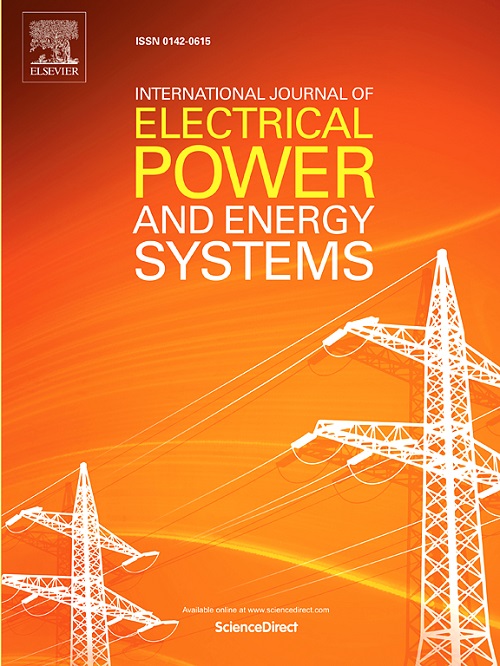Grid-connection damping strategy for grid-forming VSG based on angular frequency lead-lag feedforward compensation
IF 5
2区 工程技术
Q1 ENGINEERING, ELECTRICAL & ELECTRONIC
International Journal of Electrical Power & Energy Systems
Pub Date : 2025-04-08
DOI:10.1016/j.ijepes.2025.110652
引用次数: 0
Abstract
The primary frequency modulation coefficient of the grid-forming virtual synchronous generator (GFVSG) is coupled with the virtual damping coefficient, which leads to the problem that it is difficult to take into account both the dynamic oscillation and the steady-state deviation of the grid-connected active power (GCAP). To address this issue, an improved GFVSG grid-connected damping strategy based on angular frequency lead-lag feedforward compensation is proposed in this paper. This strategy introduces the angular frequency lead-lag feedforward compensation link into the GCAP closed-loop control loop of GFVSG, and improves both the GCAP dynamic and steady state response performances of GFVSG through reasonable adjustment of the lead-lag compensation parameters. Finally, according to the comparison results of simulation and experimental tests, it can be seen that the proposed grid-connected damping strategy can effectively solve the GCAP dynamic oscillation and steady-state deviation problems existing in GFVSG under the step disturbances of active power command and grid frequency.
基于角频率超前滞后前馈补偿的成网VSG并网阻尼策略
并网虚拟同步发电机(GFVSG)的一次调频系数与虚拟阻尼系数耦合,导致并网有功功率(GCAP)的动态振荡和稳态偏差难以兼顾。针对这一问题,本文提出了一种基于角频率超前滞后前馈补偿的改进GFVSG并网阻尼策略。该策略将角频率超前滞后前馈补偿环节引入到GFVSG的GCAP闭环控制回路中,通过合理调整超前滞后补偿参数,提高GFVSG的GCAP动态和稳态响应性能。最后,通过仿真与实验测试的对比结果可以看出,所提出的并网阻尼策略能够有效解决GFVSG在有功指令和电网频率阶跃干扰下存在的GCAP动态振荡和稳态偏差问题。
本文章由计算机程序翻译,如有差异,请以英文原文为准。
求助全文
约1分钟内获得全文
求助全文
来源期刊
CiteScore
12.10
自引率
17.30%
发文量
1022
审稿时长
51 days
期刊介绍:
The journal covers theoretical developments in electrical power and energy systems and their applications. The coverage embraces: generation and network planning; reliability; long and short term operation; expert systems; neural networks; object oriented systems; system control centres; database and information systems; stock and parameter estimation; system security and adequacy; network theory, modelling and computation; small and large system dynamics; dynamic model identification; on-line control including load and switching control; protection; distribution systems; energy economics; impact of non-conventional systems; and man-machine interfaces.
As well as original research papers, the journal publishes short contributions, book reviews and conference reports. All papers are peer-reviewed by at least two referees.

 求助内容:
求助内容: 应助结果提醒方式:
应助结果提醒方式:


